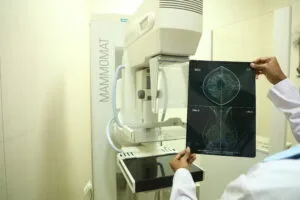How To Interpret Bone Mineral Density Test Results

Two scores provided by bone mineral density (BMD) studies are clinically important:
- T-Score: The T-score is a comparison of the patient’s bone density with healthy, young individuals of the same sex.
- Z-Score: The Z-score is a comparison with the bone density of people of the same age and sex as the patient.
WHO definitions based on BMD T-score:
| T-score | Bone Density Level |
| +1 to -1 | Normal bone density |
| -1 to -2.5 | Osteopenia (low bone mass) |
| < -2.5 | Osteoporosis (low calcium in bones) |
Osteoporosis may be diagnosed in postmenopausal women and in men aged 50 years and older if the T-score of the lumbar spine, total hip, or femoral neck is -2.5 or less.
The following are graphic representations of bone densities (as per the T-scores), of more than 4,500 adults who got their BMD tested at Suburban Diagnostics over the past 6 years:
Important facts emerging from our study are:
- A higher proportion of males had low bone density in the 30-39 years and 40-49 years age groups compared to females in the same age groups – 41% and 50% respectively in males versus 31% and 40% in females.
- The vast majority of women experienced a significant drop in bone density in the postmenopausal age groups.
Please note:
- Males are just as (if not more) susceptible as females for osteoporosis.
- Osteoporosis can be seen even in their 30s and 40s.
- BMD testing is essential for assessing osteopenia and osteoporosis, especially for postmenopausal women.
#unburdenhealthcare with us.
[post_date]
[Sassy_Social_Share]



